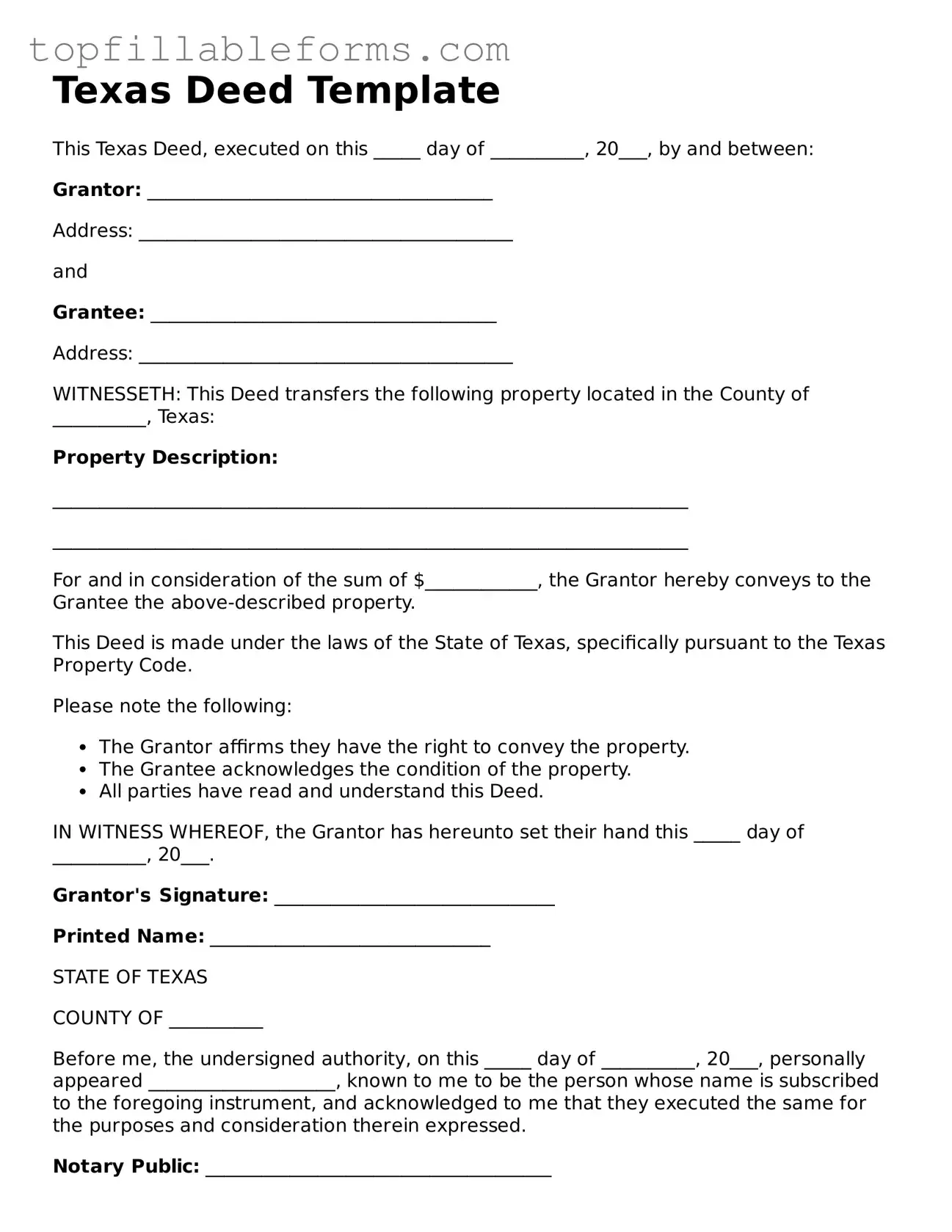Texas Deed Template
This Texas Deed, executed on this _____ day of __________, 20___, by and between:
Grantor: _____________________________________
Address: ________________________________________
and
Grantee: _____________________________________
Address: ________________________________________
WITNESSETH: This Deed transfers the following property located in the County of __________, Texas:
Property Description:
____________________________________________________________________
____________________________________________________________________
For and in consideration of the sum of $____________, the Grantor hereby conveys to the Grantee the above-described property.
This Deed is made under the laws of the State of Texas, specifically pursuant to the Texas Property Code.
Please note the following:
- The Grantor affirms they have the right to convey the property.
- The Grantee acknowledges the condition of the property.
- All parties have read and understand this Deed.
IN WITNESS WHEREOF, the Grantor has hereunto set their hand this _____ day of __________, 20___.
Grantor's Signature: ______________________________
Printed Name: ______________________________
STATE OF TEXAS
COUNTY OF __________
Before me, the undersigned authority, on this _____ day of __________, 20___, personally appeared ____________________, known to me to be the person whose name is subscribed to the foregoing instrument, and acknowledged to me that they executed the same for the purposes and consideration therein expressed.
Notary Public: _____________________________________
My commission expires: ________________________
